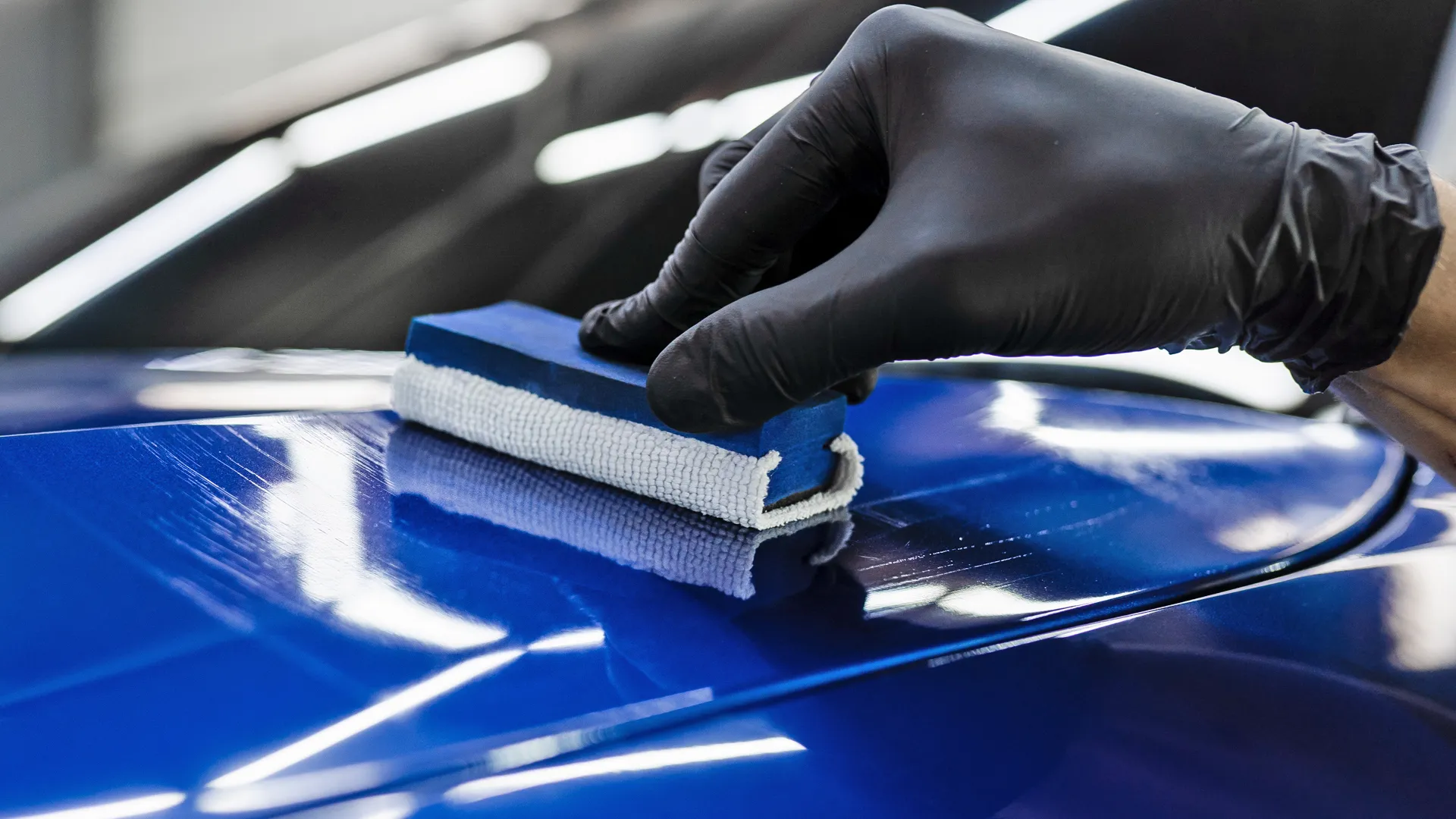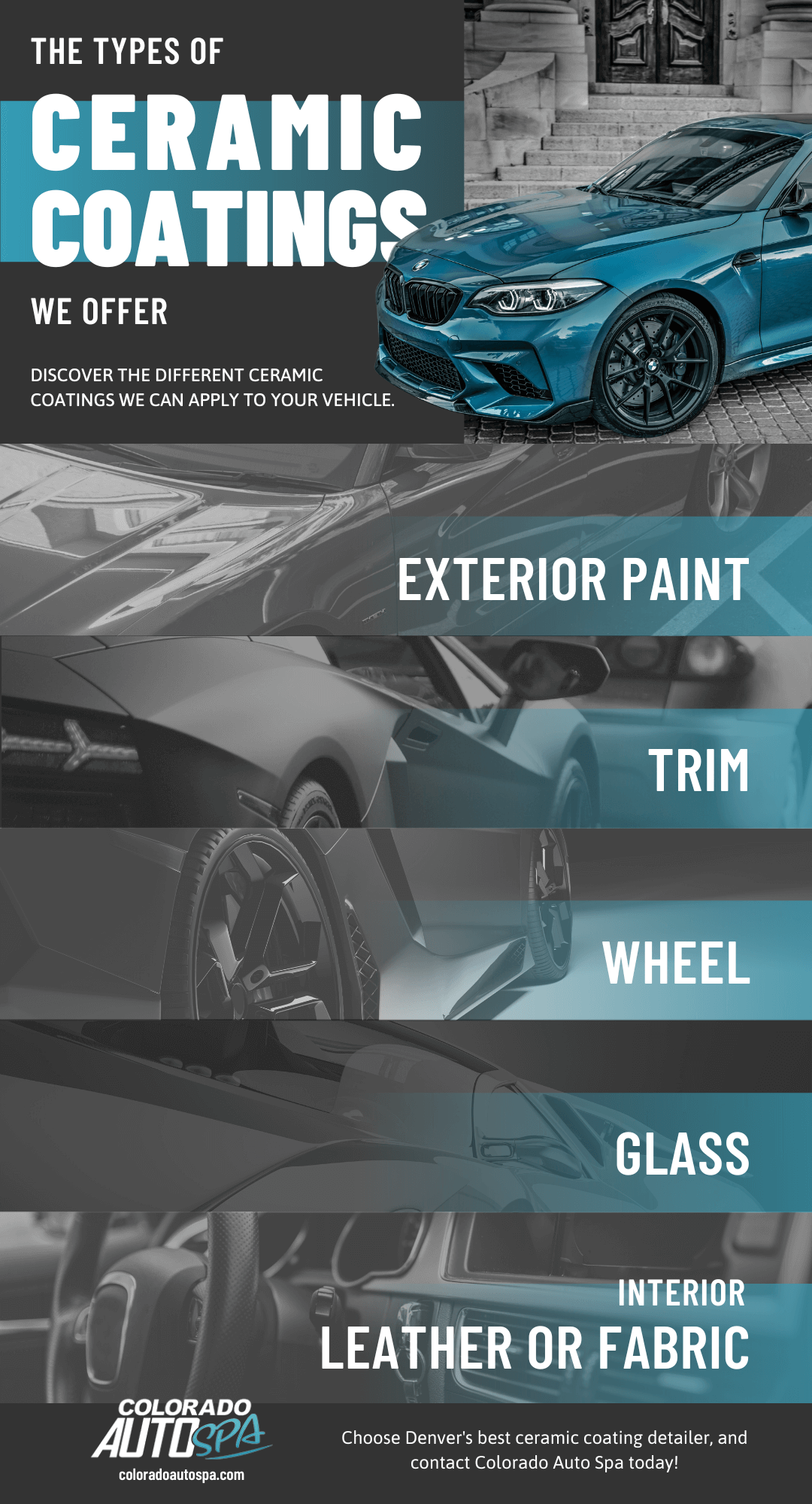Ceramic Coating vs. Traditional Wax: Which Offers Better Long-Term Protection?
The argument in between ceramic layers and typical wax for car protection has actually amassed substantial attention among automobile lovers and experts alike. Ceramic coverings boast superior durability and resistance to ecological aspects, yet the complexity of their application elevates questions about access and functionality.
Review of Ceramic Finishing
Ceramic finishing has acquired considerable popularity amongst automotive enthusiasts and detailers alike because of its sophisticated protective high qualities. This ingenious technology is created to develop a resilient, hydrophobic shield over an automobile's paint surface area, significantly enhancing its resistance to environmental impurities such as dust, UV rays, and chemical stains. Unlike typical wax, which offers a momentary layer of defense, ceramic coatings bond at a molecular degree with the paint, offering long-lasting toughness-- often extending beyond 2 years with proper maintenance.
The application procedure entails precise preparation of the car's surface, including cleansing and brightening to guarantee optimum bond. When applied, the finish remedies to form a robust layer that not only includes depth and gloss to the paint but also simplifies upkeep. With its hydrophobic homes, ceramic finish enables water and dirt to glide off even more quickly, decreasing the regularity of washes and reducing the threat of swirl marks.
In addition, ceramic coverings are available in numerous formulas, permitting customers to choose products tailored to their specific requirements and preferences. In general, ceramic finishing represents a significant innovation in paint protection innovation, supplying exceptional efficiency compared to standard options.
Review of Standard Wax
Commonly considered as a staple in automobile care, wax functions as a preferred selection for those seeking a simple approach to improve and secure their automobile's paint - ceramic coating. Automotive wax usually consists of natural active ingredients, such as carnauba, or synthetic compounds, developed to produce a safety layer on the surface area of the paint. This layer not only boosts the vehicle's gloss and radiate but also gives a barrier against environmental pollutants
The application of wax is generally easy to use, making it obtainable for both experts and do it yourself enthusiasts. It can be applied by hand or machine, permitting adaptability in the detailing procedure. When used, wax calls for a healing duration, after which it hardens to form a protective shell. Wax is additionally known for its ability to repel water, advertising a beading impact that helps in the prevention of water places and corrosion.
Nonetheless, while wax is effective for improving the visual charm of a car, it is important to note that the security it provides may demand more constant reapplication contrasted to different products, such as ceramic finishings. Overall, standard wax stays a favored alternative for those prioritizing convenience of use and immediate aesthetic enhancement.
Toughness and Durability Contrast
While both ceramic coatings and traditional wax deal protective advantages for auto paint, their toughness and durability differ considerably. Conventional wax, generally made from all-natural carnauba or artificial polymers, normally offers a safety layer that lasts roughly 3 to six months. This relatively brief lifespan necessitates routine reapplication to keep optimal security.
On the other hand, ceramic coatings are engineered from sophisticated nanotechnology, forming a covalent bond with the paint surface. This causes a durable, hydrophobic layer that can endure for 2 to five years, depending upon the product and ecological conditions. The premium resilience of ceramic finishes is associated to their chemical framework, which offers boosted resistance to scratches, UV rays, and oxidation.

Defense Against Environmental Elements
Protecting a vehicle's paint from ecological elements is critical for maintaining its appearance and value over time. Cars are continuously revealed to a selection of aspects, including UV rays, bird droppings, tree sap, acid rainfall, and roadway gunk, every one of which can jeopardize the honesty of the paintwork.
Ceramic finishings supply a robust protection versus these environmental assailants. Unlike conventional wax, which can break down quickly under UV direct exposure, ceramic finishings develop a sturdy, hydrophobic layer Visit This Link that withstands the dangerous impacts of sunshine and toxic wastes. This advanced modern technology produces a chemical bond with the automobile's surface area, supplying superior security that lasts for many years, also in harsh conditions.
Conventional wax, while simpler to use, generally calls for constant reapplication and supplies minimal resistance to pollutants and UV rays. Gradually, it can break down, leaving the paint prone to scrapes and oxidation. In contrast, ceramic layers preserve their safety top qualities longer, substantially decreasing the threat of paint damages and ensuring that the automobile keeps its visual charm. Therefore, ceramic finishes are progressively recognized as the remarkable selection for long-lasting security against environmental aspects.
Application and Maintenance Distinctions
The methods of application and succeeding maintenance for ceramic finishings and conventional wax vary dramatically, affecting the general user experience and efficiency of each product. Ceramic layers require a more detailed application procedure, typically including surface area prep work that includes washing, decontaminating, and polishing the vehicle. When the surface area prepares, the ceramic layer is used in a regulated environment, often needing specialist competence to make sure proper treating and bonding to the paint.

While both products improve vehicle look, the longer-lasting defense used by ceramic finishings might justify their preliminary investment, in spite of the even more requiring application procedure. Conversely, typical wax stays a prominent selection for those looking for an easier, albeit temporary, solution.

Verdict
In conclusion, ceramic finishes show significant benefits over standard wax in terms of toughness and environmental security. With a life important source expectancy extending two to 5 years and exceptional resistance to UV rays, dust, and chemical spots, ceramic finishings use an extra effective solution for lasting automobile upkeep. The application procedure might require specialist expertise, the resulting expense savings and lowered frequency of reapplication emphasize the worth of ceramic coatings for those looking for optimal lorry defense.
The discussion between ceramic finishings and conventional wax for car security has actually gathered significant focus among automotive lovers and professionals alike. Unlike traditional wax, which gives a momentary layer of defense, ceramic finishes bond at a molecular degree with the paint, offering durable sturdiness-- often prolonging beyond two years with correct upkeep.
While both ceramic finishes and conventional wax deal safety benefits for automobile paint, their resilience and long life differ considerably. For auto enthusiasts looking for lasting defense, ceramic coverings provide a compelling advantage over standard wax items.
In verdict, ceramic finishings show considerable benefits over image source typical wax in terms of resilience and environmental protection.